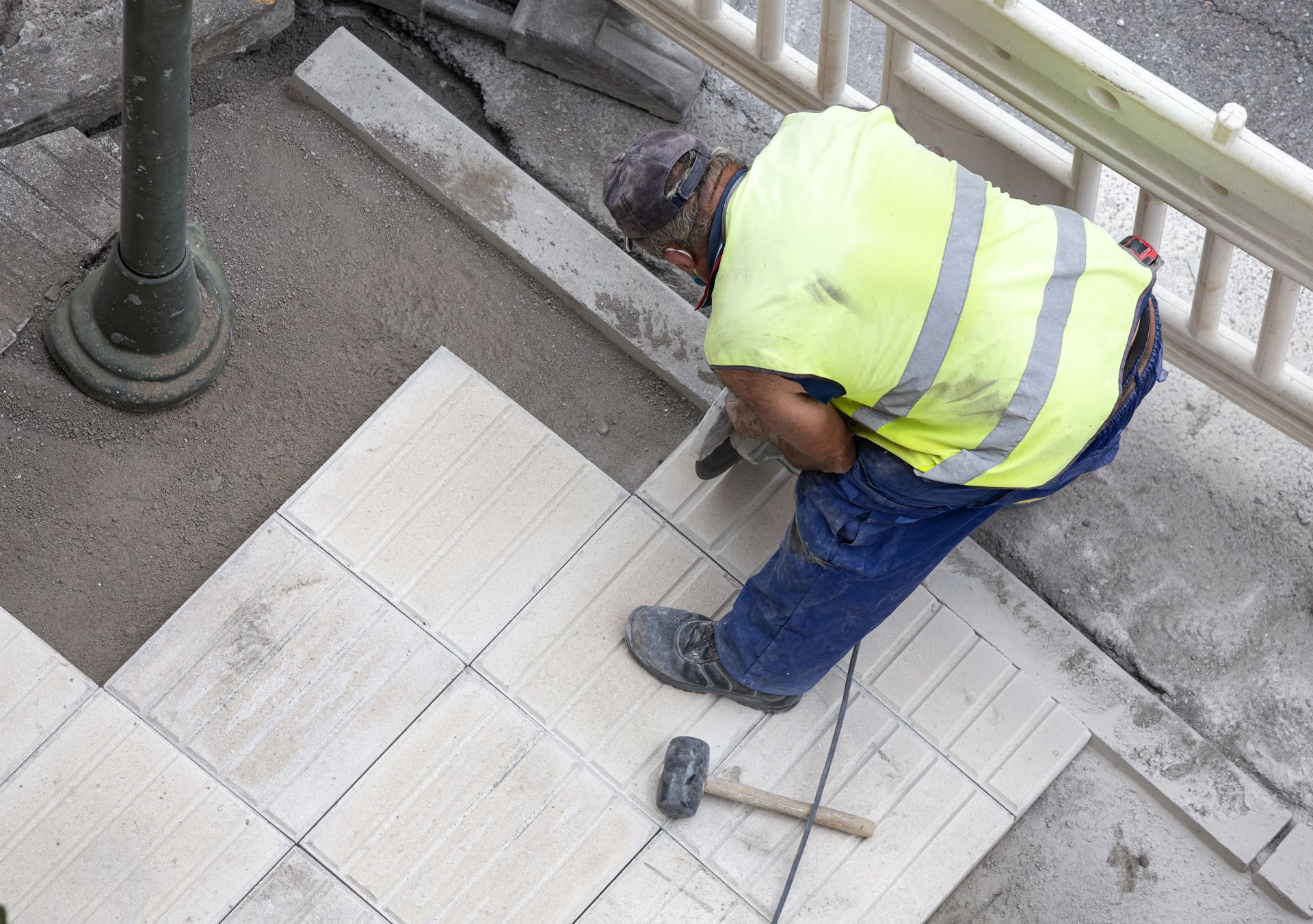New York Tile Contractor Insurance
See How We're Different:
or Call Us: 212-425-8150

Most Common Business Policies
Index
Contact Us
For tile contractors operating in New York, securing the right insurance coverage is not just a regulatory formality—it’s a critical safeguard against the unique risks prevalent in the city’s bustling construction industry. With the construction sector in New York facing rising insurance costs, increased injury rates, and a complex legal environment shaped by laws like the Scaffold Law, understanding insurance nuances is essential for tile installers aiming to protect their business and workforce.
This comprehensive guide dives into the current landscape of tile contractor insurance in New York, highlighting key challenges, cost factors, and best practices to ensure you’re well-prepared in 2024 and beyond. For those interested in the broader industry context, the
Tile Installers industry market size in New York is projected to reach $1 billion this year, underscoring the sector’s growth and the importance of robust insurance solutions.
Understanding the Rising Cost of Insurance for Tile Contractors
One of the most pressing concerns for tile contractors in New York is the escalating cost of insurance premiums. Over the past decade, the cost to insure large construction projects has surged dramatically. For instance, the insurance cost for a $100 million construction project in New York City jumped from 4% in 2010 to 12% in 2024, a threefold increase that reflects broader industry challenges.
This steep rise is largely driven by the high frequency of construction-related injuries and the legal environment in New York. The Scaffold Law, which holds contractors absolutely liable for gravity-related injuries regardless of fault, significantly inflates insurance premiums. According to legal expert Brandon J. Broderick, New York construction companies face premiums that are on average 5 to 10 times higher than those in neighboring states due to this law.
For tile contractors, who often work at heights and in physically demanding conditions, these insurance costs can be a substantial part of operational expenses. Understanding these factors helps contractors budget appropriately and seek specialized insurance brokers who focus exclusively on New York construction risks.
Moreover, the impact of rising insurance costs extends beyond just financial implications; it can also affect project timelines and contractor relationships. As insurance premiums climb, many contractors may find themselves needing to adjust their bids, which can lead to increased project costs for clients. This, in turn, may result in fewer contracts being awarded, as clients seek to balance quality with budget constraints. Consequently, tile contractors may face a more competitive bidding environment, compelling them to enhance their proposals with added value services or innovative solutions to stand out.
Additionally, the insurance landscape is evolving with the introduction of new technology and
risk management strategies. Many tile contractors are now investing in training programs that emphasize safety protocols and injury prevention, which not only help reduce the frequency of accidents but can also lead to potential discounts on insurance premiums. By adopting advanced project management tools and safety monitoring systems, contractors can demonstrate their commitment to minimizing risks, thereby positioning themselves more favorably in the eyes of insurers. This proactive approach not only aids in managing costs but also fosters a culture of safety that benefits both workers and clients alike.

Common Risks and Claims in New York Construction
Tile installation, while specialized, shares many of the risks common to the broader construction industry. Falls, slips, and other accidents are frequent hazards, especially when working on scaffolds or uneven surfaces. In 2023 alone, New York City recorded 841 building construction-related incidents, resulting in 692 injuries and 7 fatalities. These statistics highlight the importance of comprehensive insurance coverage tailored to the specific risks tile contractors face.
Steven Hrab, Director of Construction at Burns & Wilcox, emphasizes the direct link between injury rates and fatalities, stating, "With increased injuries, there is always going to be the potential for an increase in fatalities." This underscores why insurance providers scrutinize injury data closely when underwriting policies for tile contractors in New York.
Moreover, the industry is grappling with a surge in fraudulent injury claims, sometimes referred to as the "fraudemic." In 2024, a lawsuit was filed alleging that 650 construction site falls in New York were fraudulent. This has prompted industry leaders to convene and strategize on combating these false claims, which drive up insurance costs for everyone. More details on this development can be found through Skylines News.
In addition to the physical risks associated with tile installation, contractors also face significant financial risks stemming from project delays and budget overruns. These issues can arise from a variety of factors, including supply chain disruptions, labor shortages, and unexpected site conditions. For instance, the COVID-19 pandemic has had a lasting impact on material availability and costs, forcing many contractors to reassess their budgets and timelines. As a result, having a solid risk management plan and appropriate insurance coverage is crucial for protecting against these unforeseen challenges.
The regulatory landscape in New York also adds another layer of complexity for tile contractors. Compliance with local building codes, safety regulations, and environmental standards is essential, yet navigating these requirements can be daunting. Failure to adhere to these regulations not only poses risks to worker safety but can also lead to costly fines and legal repercussions. Consequently, many contractors are investing in training and resources to ensure their teams are well-informed about compliance issues, thereby reducing the likelihood of incidents and claims.
Key Insurance Coverages for Tile Contractors
Tile contractors must carefully select insurance policies that address the unique risks of their trade. The primary types of insurance to consider include:
- General Liability Insurance: Protects against third-party claims of bodily injury or property damage caused by your work.
- Workers’ Compensation Insurance: Mandatory in New York, this covers medical expenses and lost wages for employees injured on the job.
- Commercial Auto Insurance: Essential if vehicles are used to transport materials and equipment.
- Tools and Equipment Coverage: Protects against loss or damage to expensive tile installation tools.
- Professional Liability Insurance: Covers claims related to workmanship errors or omissions.
Given the high risk of falls and injuries on New York construction sites, some insurers may also require or recommend additional coverages such as umbrella policies for added protection. Working with brokers who specialize in New York construction insurance can help tile contractors navigate these options effectively. As Steven Hrab notes, "The best insurance brokers in the world simply focus on New York construction — it is a niche industry and you have to be an expert on it."
In addition to these essential coverages, tile contractors should also consider the importance of bonding. A surety bond can provide an extra layer of security for clients, ensuring that projects are completed as agreed. This is particularly relevant in the competitive New York market, where clients often expect guarantees of quality and reliability. Furthermore, having a bond can enhance a contractor's credibility, making it easier to secure contracts and build a solid reputation in the industry.
Moreover, tile contractors should stay informed about the evolving regulations and safety standards in New York. Compliance with local laws not only helps in avoiding legal issues but also plays a crucial role in risk management. Participating in
safety training programs and keeping abreast of best practices can further mitigate risks associated with tile installation. These proactive measures not only protect the contractor's business but also contribute to a safer work environment for all employees involved.

Strategies to Manage Insurance Costs and Risks
While insurance premiums in New York are notably high, tile contractors can adopt several strategies to manage costs and reduce risk exposure:
- Implement Robust Safety Programs: Investing in comprehensive safety training and protocols can reduce workplace injuries, which in turn may lower insurance premiums.
- Maintain Detailed Documentation: Accurate records of safety measures, employee training, and incident reports can be invaluable in defending against fraudulent claims.
- Partner with Specialized Brokers: Experts familiar with New York’s construction insurance landscape can identify cost-saving opportunities and tailor coverage to your needs.
- Stay Informed on Legal Changes: Laws like the Scaffold Law heavily influence insurance costs, so staying updated on legislative developments can help contractors anticipate and adapt to changes.
By proactively addressing these areas, tile contractors not only protect their business but also contribute to a safer industry environment. Additionally, fostering a culture of safety within the organization can lead to long-term benefits. Encouraging employees to actively participate in safety discussions and decision-making can enhance their commitment to following safety protocols, ultimately reducing the likelihood of accidents and claims. Regular safety audits and feedback sessions can also help identify potential hazards before they become serious issues, further mitigating risk.
Moreover, exploring alternative insurance options, such as group purchasing arrangements or self-insurance, can provide additional avenues for cost savings. By pooling resources with other contractors, businesses may gain access to lower premiums and more favorable terms. Understanding the nuances of different insurance products, including general liability, workers' compensation, and property insurance, allows contractors to make informed decisions that align with their specific needs and risk profiles. This proactive approach not only safeguards the financial health of the business but also enhances its reputation within the community.
The Future Outlook for Tile Contractor Insurance in New York
The New York tile installation industry is poised for continued growth, with market size expected to reach $1 billion in 2024. However, the insurance landscape remains challenging due to persistent high injury rates, legal complexities, and the ongoing impact of fraudulent claims. Industry leaders are actively collaborating to combat these issues, aiming to stabilize insurance costs and improve safety standards.
For tile contractors, staying informed and working closely with knowledgeable insurance professionals will be key to navigating this evolving environment successfully. As the construction sector adapts, those who prioritize safety and insurance expertise will be best positioned to thrive.
In addition to the financial implications, the emphasis on safety is becoming increasingly crucial as regulatory bodies tighten their oversight of construction practices. New York's Occupational Safety and Health Administration (OSHA) has ramped up inspections and enforcement actions, which means that tile contractors must not only adhere to existing safety protocols but also stay ahead of emerging regulations. This proactive approach not only mitigates the risk of accidents but also fosters a culture of safety that can enhance a company's reputation and attract more clients.
Furthermore, advancements in technology are playing a vital role in shaping the future of tile installation and insurance. Tools such as drones for site inspections and software for project management are helping contractors streamline operations and reduce risks. By integrating these technologies, tile contractors can not only improve their efficiency but also provide insurers with better data, potentially leading to lower premiums. As the industry evolves, those who embrace innovation while maintaining a focus on safety will likely find themselves at the forefront of the market.
For additional insights on injury trends and insurance challenges in New York construction, the Burns & Wilcox report provides valuable information on recent developments.
